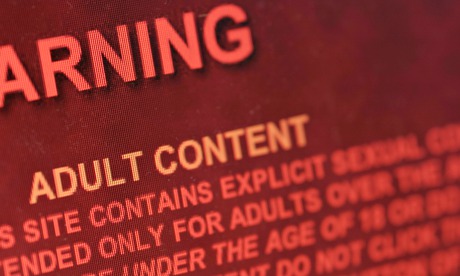
Most people remember their first encounter with sex education. I was 10 years old, in my final year at primary school, and it all kicked off with a graphic video of childbirth that I assume was supposed to be a cautionary tale. We were half-heartedly advised that if we felt uncomfortable, we could leave the room – something two of my classmates eventually did, albeit in the arms of the school nurse after fainting. I was perfectly happy to watch on with glee: the tame versions of kiddie gore my brother and I sought out in cartoons had nothing on this screaming, bleeding, dilating horror show.
For people my age and younger, there is usually another breakthrough sexual moment that they remember between the ages of 10 and 13: the first time they encountered online porn. I was 11, and our family had recently had a dial-up internet connection installed for the first time. Within about half an hour, a friend and I had managed to dig out an image where a man was telling a woman he wanted to slip his “hard knob” into her “wet pussy”. I asked my friend what it meant, and she shrugged. We viewed this experience with the exhilaration of children knowing they are doing something their parents wouldn’t want them to, but also with a complete lack of comprehension. Long after we’d logged off I was still imagining brass doorknobs assaulting bedraggled kittens.
The porn available to children these days doesn’t leave so much to the imagination, of course. If you don’t know what the knob or pussy references mean, you can see a video demonstration within a millisecond on your fibre-connected broadband. The average six-year-old knows more about digital technology than the average 45-year-old, so you can bet those clever-seeming childproof controls you’ve installed will be circumvented just as quickly. In fact, even if they don’t want to find porn, your kids are probably coming across it regularly: research released by the thinktank IPPR found that eight out of ten 18-year-olds think it’s too easy to accidentally view explicit images while surfing the internet, while two thirds of young women and almost half of young men agree that “it would be easier growing up if pornography was less easy to access for young people”.
There is nothing inherently wrong with porn: sexual imagery is something humans have produced, consumed and enjoyed since time immemorial. However, there’s no denying that the heterosexual porn available today, despite seemingly catering for every fetish you could shake a phallic stick at, disproportionately depicts routine violence towards women. Rape being simulated on crying, screaming female actors with no body hair is hardly unusual. Slapping and choking are common. Ejaculating into a woman’s face while calling her a dirty bitch and/or slut? That’s par for the course.
Perhaps this is why there are such big discrepancies between what male and female teenagers say about porn in the rest of IPPR’s report. While almost half (45%) of young men believe that porn helps people to learn about sex, only 29% of young women say the same. Only 21% of young men believe porn leads to unrealistic attitudes about sex, compared with 40% of young women. Again and again, we see the same boring videos of a woman being used as little more than a receptacle: no wonder teenage girls are uninspired.
Meanwhile, many have countered that “porn isn’t there unless you look for it” in response to these statistics, but this simply isn’t true. Consider the fact that earlier this month, the online women’s magazine Jezebel announced it was being continually spammed with images of violent porn.
We can’t stop children accessing this material, and even if we could, it would hardly serve as a permanent solution. The most pressing statistic I found in IPPR’s poll was the fact that seven out of ten of all 18-year-olds are asking for proper sex and relationship education. Whatever your personal views on the accessibility of porn, there’s no doubt we have failed to give our young men and women the tools to properly understand what’s going on online and in their own relationships. Failing to do so in this sort of landscape while conveniently turning a blind eye does less than nothing. The teenagers of today are literally telling us what they need – so why aren’t we listening?

